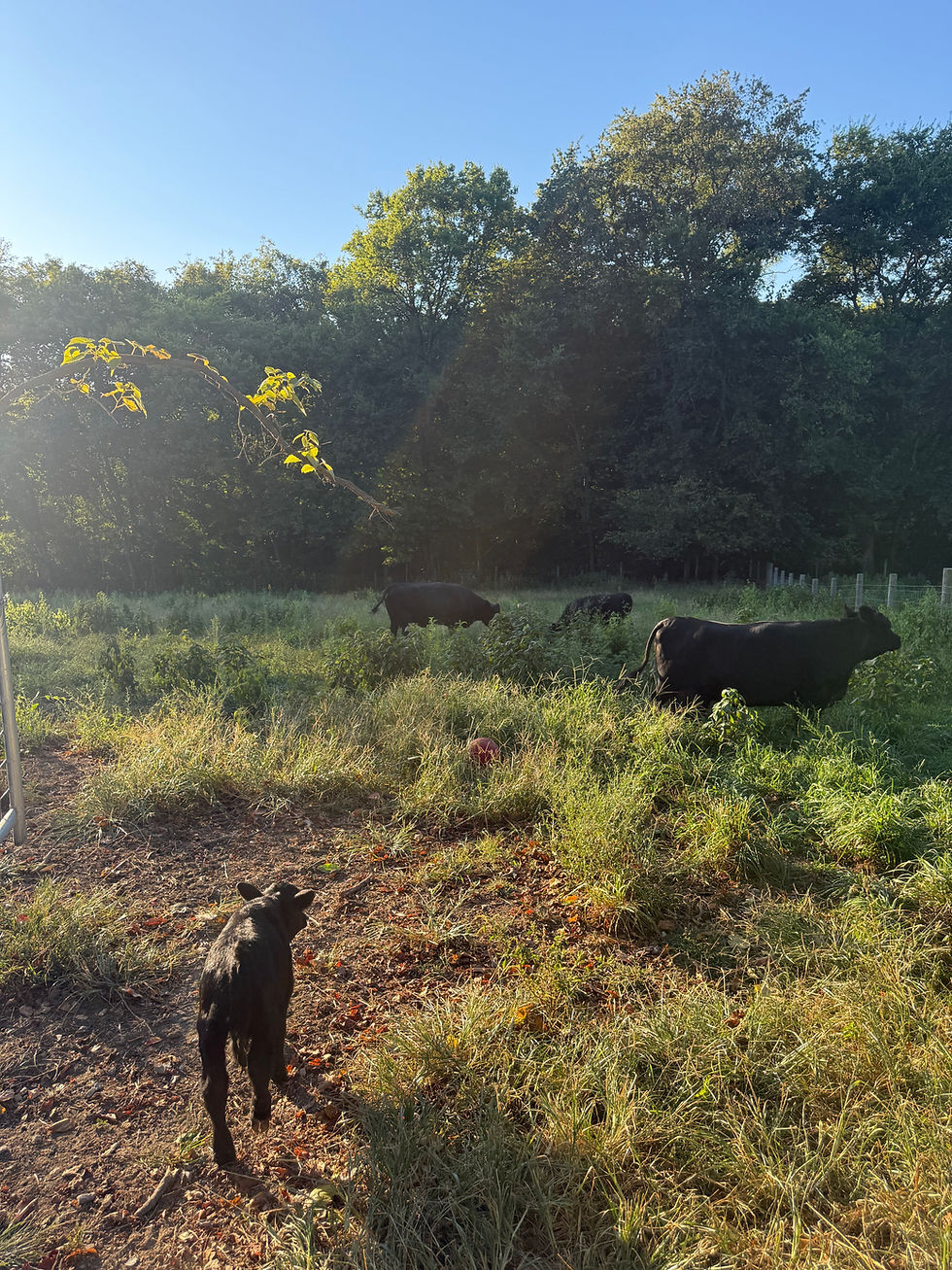All About Broody Hens
- RedeemedCoop
- Jun 25, 2022
- 3 min read
You know that feeling when you start a new job and every one seems to speak a different language? Well farming is no different. I learn a new farm word or term almost weekly. One of those terms was "broody hen". I had not heard that term before owning chickens. The definition is simply- a hen inclined to incubate eggs. But how do you identify a broody hen and what do you do if you have a broody hen. Well let me help you out with that.

First let's talk about how to identify a broody hen. One of the first thing you may notice is that the hen may not want to leave the nesting box. Since they are hoping to incubate, they may wait for the other hens to lay and then move their eggs to the same box. We found Buttercup tucking an egg under her wing and carrying it to the nesting box with the other eggs she collected. You will also noticed they become more protective of the eggs, so if you try to get eggs they may peck your hand. They will even puff up their feathers and do what is referred to as the broody growl. This growl is distinct from all other noises they make. If you have seen Jurassic Park, it is very similar to the sound of the Dilophosaurus that Nedry encountered after trying to escape.
Now that we know how to identify a broody hen, let's talk about what to do with one. You really have two options. Let them incubate eggs or break them of their broody behavior. If you choose to let them incubate eggs, it is best to make sure they are in a safe and quiet place, preferably away from the rest of the flock. This decreases their stress and allows them to stay focused on incubating rather than protecting their eggs from the rest of the flock. If you move a broody hen, it is best to do this at night. It is important to keep her stress level at a minimum. Once you have the secluded coop or area prepared, move all the eggs to the new nest, and then place her inside the nesting box. I did this when I brought her to get some water, that way she was distracted when I moved the eggs. Then I moved her and closed her in the new secluded coop for the night. Buttercup did great with the transition.

Broody hens will be so hyper-focused on incubating that they may not get up to eat or drink. Making sure they get good quality nutrition and plenty of water is key. We move Buttercup three times a day to the water, she grabs a quick drink and some food, then she goes right back to her eggs. That is about it. If you choose to check for fertility, it's best to do that around day 7-10. The incubation period for chicks is 21 days, so waiting until the halfway point ensures that you will see the chick growing. I wasn't able to get a good picture of our eggs but this is an example of what you will see when checking the eggs for fertility. This method is called "candling". All you need is a flashlight and an egg.

If you choose to break a hen of their broodiness, you just have to prevent them from sitting on eggs. Sometimes this is easy and just removing them from the nesting box a few times works. Other times the hen may be very persistent and you have to separate them to an area with no nesting box. Eventually they will learn that they don't have eggs to sit on and then they can rejoin the flock.

So there ya have it, the basics of identifying a broody hen and what to do if you have one. Thank y'all so much for helping me decide this weeks blog post! I have a few ideas brewing for next week but I would love your input again. Check out the poll below, or if you have another topic, please leave a comment below.
What Should I Blog About Next Week?
Juggling Responsibilities
Navigating Advice
How can I pray for you?
Please leave a comment below




Comments